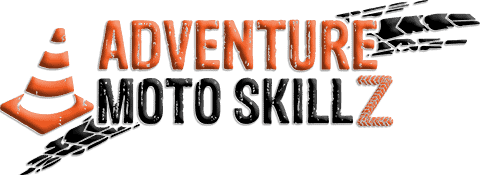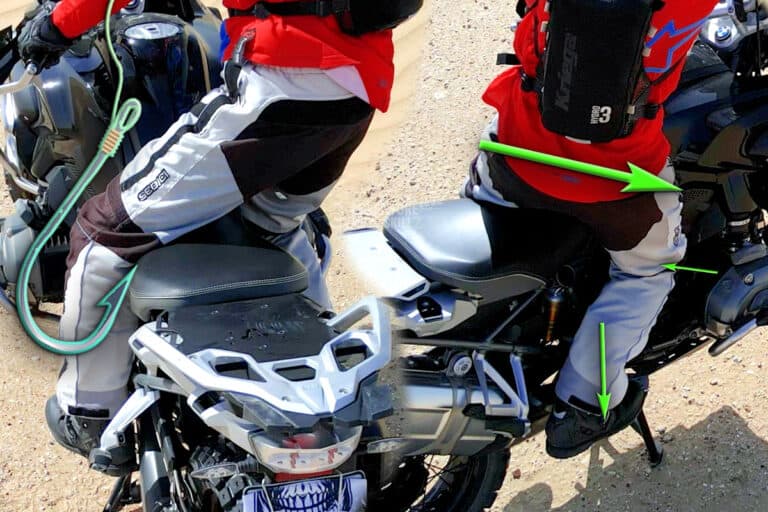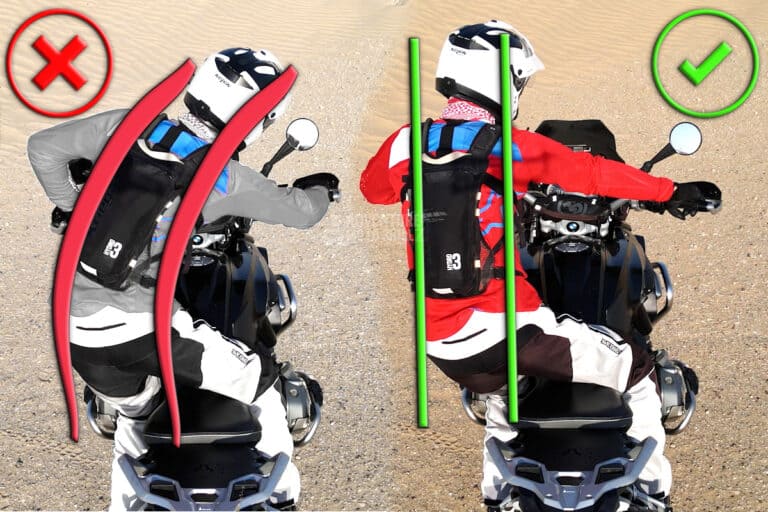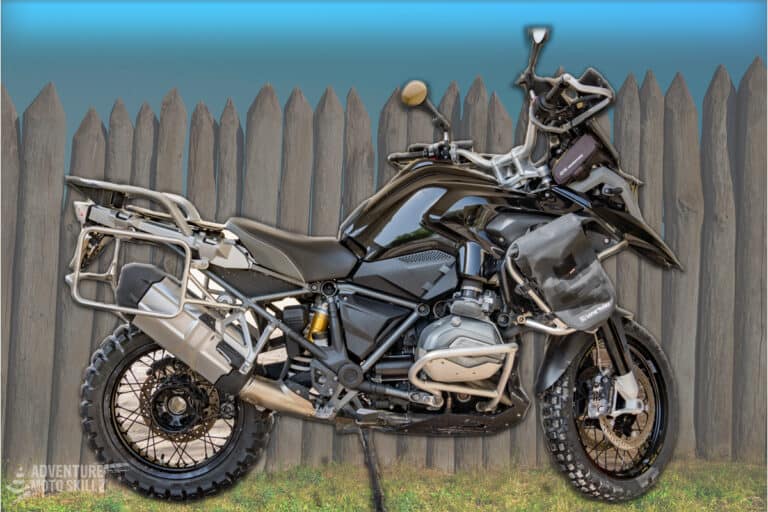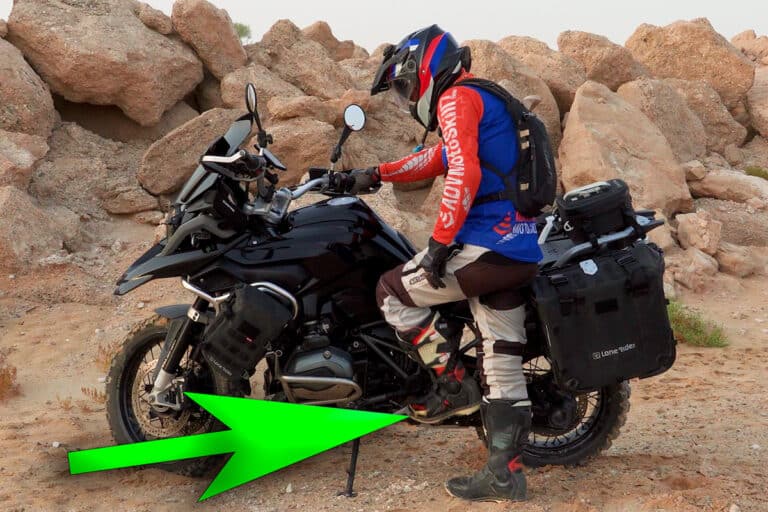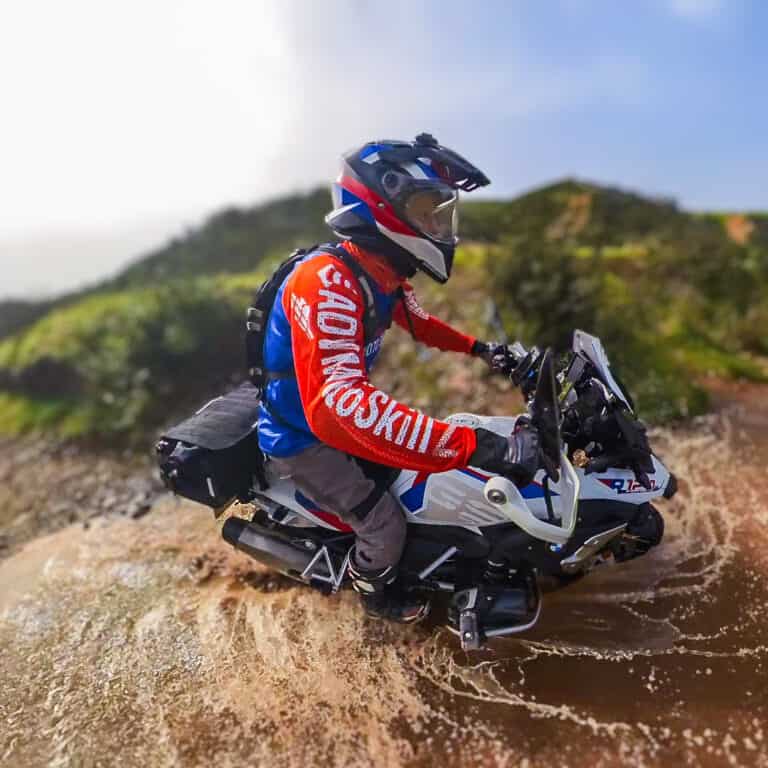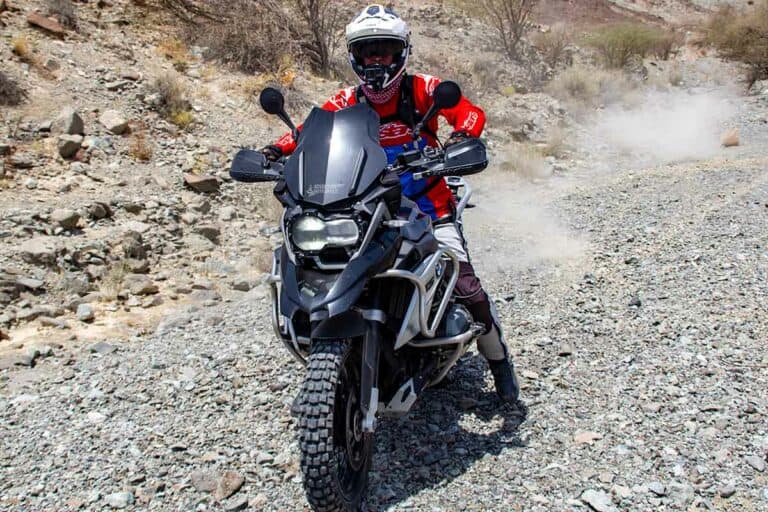ADV Motorcycle Shifting – How to Keep Gear Changes Smooth
Gear changes are a necessary part of motorcycling for those of us who have not gone the way of the DCT or electric bike. Shifting gears efficiently allows riders to deliver the correct power output to the rear wheel when needed. This skill is essential to be able to keep that ever-crucial momentum needed to keep your motorcycle online.
Timing is critical to successful and smooth motorcycle gear changes. The clutch and throttle must be adjusted in unison to match the required gear change at the shifter. This can be difficult to master, but once you get the hang of it, smooth gear changes will become second nature.
Making gear changes incorrectly can lead to a jerky ride and can even cause the bike to stall. In this blog post, we’ll go through how to make smooth gear changes on an ADV bike by going over the fundamentals of clutch control and shifting technique, as well as some troubleshooting hints. Let’s get started!
This post may contain Affiliate Links. Please see our Privacy & Disclosure Policy for more details.
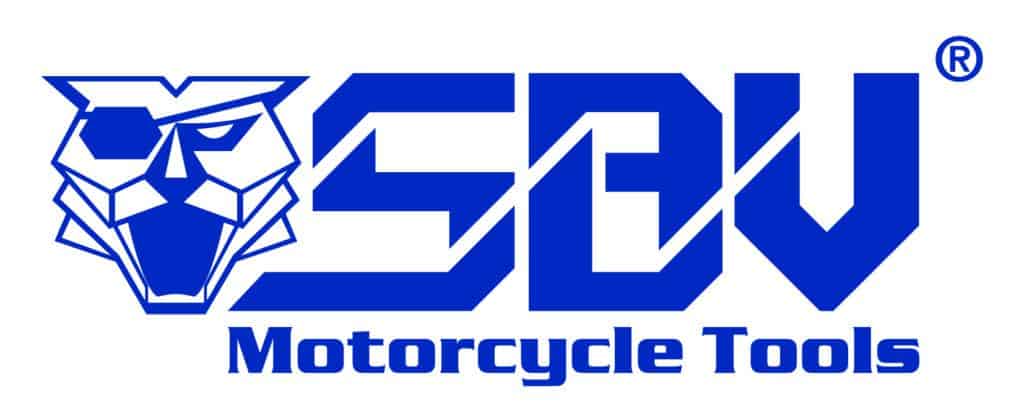
Innovative Motorcycle Tool Sets – Compact & Reliable
Used and recommended by ADVMotoSkillZ
Understanding the motorcycle clutch for smooth shifting
Motorcycle riders should have a basic understanding of the clutch’s function in order to use it to its full potential. The amount of power delivered to the engine is regulated by the clutch. When we shift up or down a gear, we do so when the clutch lever is fully engaged or fully squeezed by our left hand. The smoother your shifting performance is, the more pleasurable your ride will be.
The internal elements of the clutch include a series of plates. When you hear about someone “burning out the clutch”, it actually means that the teeth or notches on these plates have been worn down over time. To simplify the clutch’s action and effect, check out this chart:
| Clutch Lever | Clutch Plates | Power to Engine |
|---|---|---|
| Fully OUT | Touching each other | Full power |
| Fully IN | Pulled apart | No power |
| Mid Area* | Variable* | Fluctuating* |
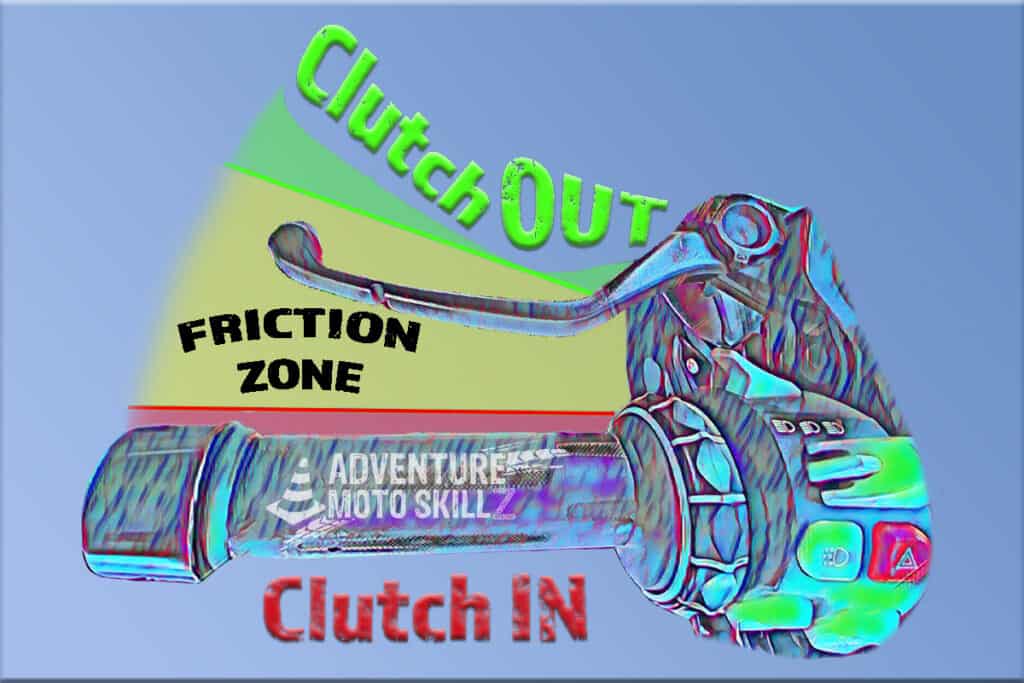
The friction zone is the yellow region in the illustration above. The friction zone endpoints on each bike vary somewhat, but the exercises that follow will help you get to know it better. Mastering the friction zone begins with practicing clutch drills without throttle input. Let’s get into it.
The folks at TecknoMechanics put together this animated video showing the inner workings of a typical motorcycle clutch. If you want a deeper understanding of clutch function, then have a look.
Mastering the Friction Zone on your ADV bike
| Key terms related to friction zone on your ADV bike | |
|---|---|
| Friction Point – the point when power begins to be delivered to the engine as the clutch lever is released; as the clutch lever is released you can feel the point when the bike starts to move forward | |
| Friction Zone – starts at the friction point and ends just before full power is delivered and the clutch lever is fully released | |
| Feathering – moving the clutch lever within the friction zone resulting in varying amounts of power being delivered to the rear wheel by the engine | |
| Slipping – a common synonym for feathering (above) or related to a malfunction of the internal plates of the clutch | |
| Blipping – a very quick roll-on of throttle delivering a dose of gas to the engine | |
| Upshifting – shifting gears from smaller to larger numbers (1-N-2-3-4-5-6) as speed increases | |
| Downshifting – shifting gears from larger to smaller numbers (6-5-4-3-2-N-1) as speed decreases |
Get to know your friction zone with these drills:
- Walking the bike from the left side
- Stand on the left side of the bike
- Clutch lever fully pulled in
- Front Brake covered with 1 or 2 fingers
- Engine ON
- Bike in 1st gear
- Slowly open and close the clutch allowing the bike to slightly rock front to back
- Do not use any throttle
- Feel the friction point and friction zone movement
- When comfortable, slowly feather the clutch and allow it to roll forward at a walking pace only
- Pull the clutch in gently to slow the bike and release gently to move faster
- If the bike begins to move too quickly, pull the clutch in fully to cut power and/or engage the front brake
- Keep right hip close to the bike for support
- Walking the bike from the right side
- same as above but from the right side
- use left hip to support the bike
- Walking large figure-8s & cone slalom from both sides of the bike
- this is more advance and can be used after feeling confident with the walking drill in a straight line
- Increase the challenge by walking the bike up or down a small incline or hill
- Repeat the same drills while seated on the bike
Watch friction zone drill examples here:
Upshifting gears for off-road motorcycle riding
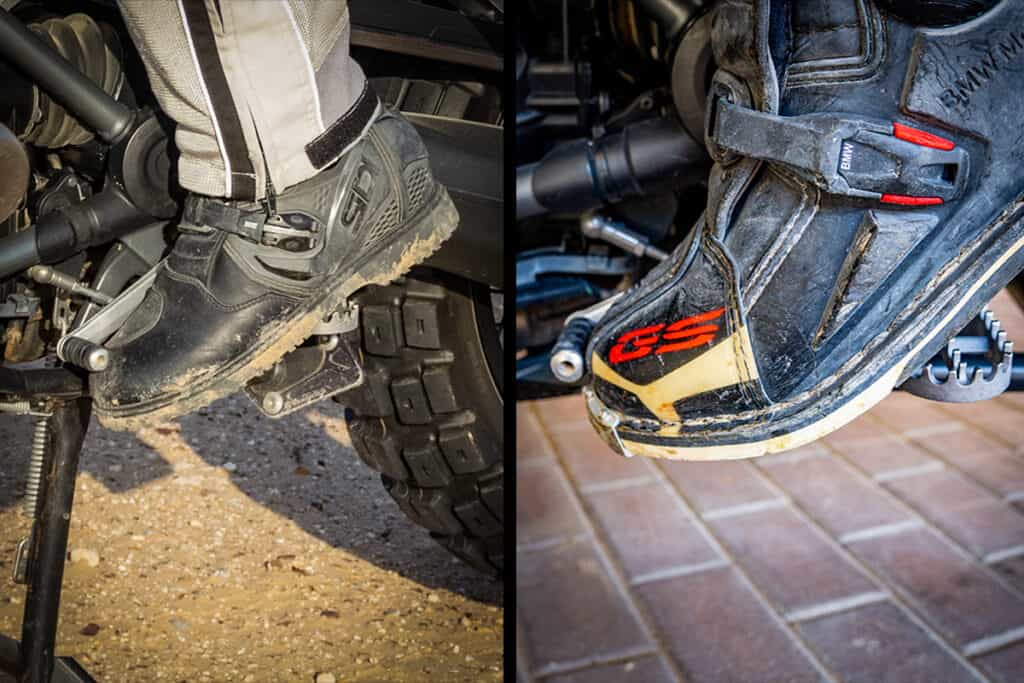
Shifting is all about preparing the bike to be in the right gear for the right speed you are about to ride next. Gear changes affect your speed, control, and balance, so smoother is always better. Let’s look at the process of upshifting from a full stop.
With the bike engine on and in neutral, pull the clutch in with your left hand. Cover the front brake lever with one or two fingers. With your left foot, tap the shifter lever down into first gear. You should hear and feel the transmission click into gear.
Next, begin to slowly release the clutch lever to the friction point and into the friction zone while also gently rolling the throttle open. This combination of controlled clutch release and throttle roll will allow the bike to start to move forward. Slowly add more throttle and fully release the clutch until you are steadily traveling in first gear.

Top-quality gear for your next adventure
Used and recommended by ADVMotoSkillZ
Once you are on the move, upshifting will be needed to allow the bike to increase speed. When you are ready to shift up to the next gear, place your left foot under the shifter with slight upward tension on it. Next, roll off the throttle while pulling the clutch lever completely in. Quickly lift your left toes up to shift up through neutral and into 2nd gear. Slowly release the clutch while also rolling on the throttle to continue. This first upshift tends to be the most difficult shift to master because you have to travel through neutral in order to get into second gear.
If the bike does not move forward, then the bike is likely in neutral instead of second gear. Simply repeat the gear change procedure to get into second.
The process of shifting from 2-3-4-5-6 is exactly the same as you increase speed.
A smooth upshift comes from the controlled and steady movement of the clutch lever and throttle work combined with the quick, firm lifting of the shifter with the left foot. If you find the bike is jerky forward at shifts, then go back to the friction zone exercises above and continue the practice drills.
Here you can see the combined use of clutch and throttle:
Downshifting gears for off-road motorcycle riding
When it is time to slow the bike down, we will need to downshift our gears to keep the engine and rear-wheel spin matched. As you initiate a slowdown, you will naturally need to roll off the throttle to help decelerate the bike.
When it is time to downshift, squeeze the clutch lever all the way in and firmly tap the shift lever down. Lastly, release the clutch in a slow and controlled motion. Change only one gear at a time and repeat the steps as needed to reduce to your desired speed until you gain more experience.
For even smoother downshifting, you can roll on the throttle slightly (blip) as you release the clutch lever. This can match up the engine speed and rear wheel speed quicker.
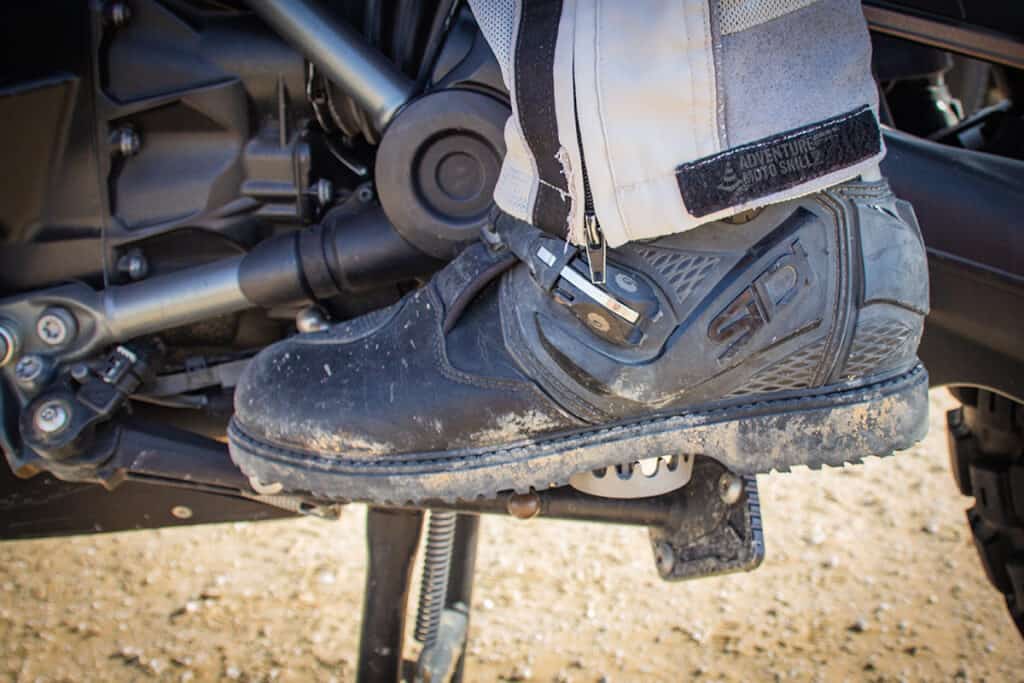
Troubleshooting your motorcycle shifting
False Neutral – A “false neutral” can happen when the gears do not properly engage with the transmission when shifting. The most common cause of a false neutral is failing to pull the clutch lever all the way in before changing gears with your foot. If this occurs, quickly pull the clutch lever ALL the way in and be firm with your foot on the shift lever. There may be some unpleasant clunks in the transmission as this happens, which can be reduced by rev-match the engine (with a quick blip of the throttle) to the bike’s actual rear wheel speed.
Unable to reach shifter comfortably – All ADV bikes should be set up with proper ergonomics to match your body size. Be sure to adjust your shifter to meet your needs.
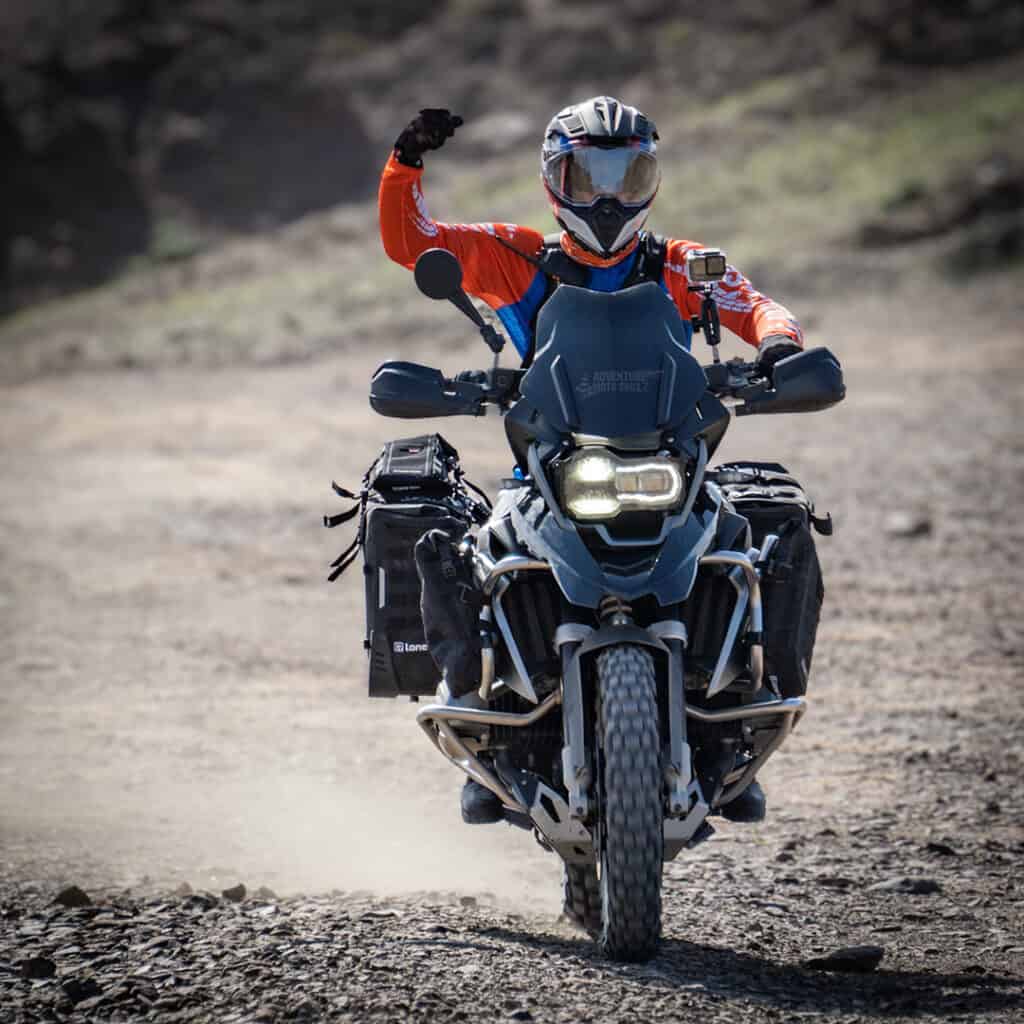
About the Author
Coach Mike is a Certified Off-Road Motorcycle Instructor & founder of ADVMotoSkillZ.
Riding tips from ADVMotoSkillZ reach thousands of international riders daily through social & blogs.
Click here to learn more about Mike’s motorcycle evolution from a Harley road rider to finding his true passion for off-road riding on a BMW 1200 GS.
If you would like to send Mike a quick message or invite him to provide training at your local facility, then visit the contact page here.
